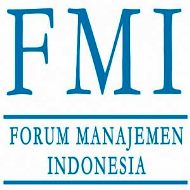The Effect of the COVID-19 Pandemic and Utaut2 in Adopting Mobile Banking at Jakarta
DOI:
https://doi.org/10.32832/jm-uika.v13i1.4792Keywords:
Covid-19 pandemic, Utaut2 Model, behavioral intention, adoption of mobile bankingAbstract
In today's modern era, technology is growing rapidly, especially in the digital banking sector, including mobile banking. Coupled with the COVID-19 pandemic, which has limited public activities such school from home, make increased in digital transactions. The purpose of this study was to determine and analyze the factors that influence the Behavioral Intention of DKI Jakarta private students in using mobile banking using the development of the UTAUT2 model. The development of the UTAUT2 model was by adding the Covid-19 pandemic perception variable in the use of mobile banking as an influencing variable. This research used multiple regression analysis method with the help of SPSS ver. 26.0. The sampling technique was purposive sampling with criteria students from private universities that resided at Jakarta and were using mobile banking. Questionnaires were distributed in the first week of April 2021 by online using Google Form. There were 102 respondents that fit the criteria from 114 students. Two factors from model Utaut2 influnced significantly, which were hedonic motivation and habit. The other result was the COVID-19 pandemic has proven as a significant nexus on the behavioral intention of using mobile banking.
References
Andrianto, A. (2020). Faktor Yang Mempengaruhi Behavior Intention Untuk Penggunaan Aplikasi Dompet Digital Menggunakan Model Utaut2. Jurnal Ilmiah Ekonomi Bisnis, 25(2), 111–122. https://doi.org/10.35760/eb.2020.v25i2.2412
APJII. (2020). Laporan Survei Internet APJII. Indonesia Suvei Center
Auliya, N. (2018). Penerapan Model Unified Theory Of Acceptance And Use Of Technology 2 Terhadap Minat Dan Perilaku Penggunaan E-Ticket Di Yogyakarta. Skripsi. Universitas Islam Indonesia. Yogyakarta
Bareksa. (2019). Pengguna Internet dan Digital Banking Melonjak Karena Faktor Ini. 26 Februari 2019. https://www.bareksa.com/berita/berita-ekonomi-terkini/2019-02-26/pengguna-internet-dan-digital-banking-melonjak-karena-faktor-ini
Bisnis. (2020). Dampak Pandemi, Perbankan Kebut Inovasi Digital. 29 September 2020. https://finansial.bisnis.com/read/20200929/90/1298255/dampak-pandemi-perbankan-kebut-inovasi-digital
Bisnis. (2021). Survei RB Consulting: Tingkat Penetrasi Digital Banking Milenial Baru 30 Persen. 14 April 2021. https://finansial.bisnis.com/read/20210414/90/1380972/survei-rb-consulting-tingkat-penetrasi-digital-banking-milenial-baru-30-persen
Chao, C. M. (2019). Factors determining the behavioral intention to use mobile learning: An application and extension of the UTAUT model. Frontiers in Psychology, 10(JULY), 1–14. https://doi.org/10.3389/fpsyg.2019.01652
Deloitte. (2020). The Future is Now Digital Financial Services in Indonesia. https://www2.deloitte.com/content/dam/Deloitte/sg/Documents/financial-services/sea-fsi-digital-financial-services-in-Indonesia-noexp.pdf
Hama Khan, Y. M. (2019). An Essential Review of Internet Banking Services in Developing Countries. E-Finanse, 15(2), 73–86. https://doi.org/10.2478/fiqf-2019-0013
Hamilton, M. (2020). Digital Banking Trend in the New Normal Era. Maybank. https://www.maybank.co.id/-/media/Downloaded-Content/writing-competition/MH_Materi_Webinar_Journalist_Competition_Sep-20-Digital-Banking-Trend.pdf
Hair JrJF, Black WC, Babin BJ, Anderson RE, Tatham RL. (2006). Multivariate Data Analysis. New Jersey: Pearson Education
KPMG & UBS Evidence Lab. (2015). Global Mobile Banking Report, The Financial Brand. https://thefinancialbrand.com/53431/global-mobile-banking-usage-study/
Mufingatun, M., Prijanto, B., Dutt, H., Faculty, V., Islamia, J. M., & Nagar, J. (2020). Analysis Of Factors Affecting Adoption Of Mobile Banking Application In Indonesia: An Application Of The Unified Theory Of Acceptance And Use Of Technology (UTAUT2). Bisnis dan Manajemen. 12(2), 88–106. https://doi.org/10.26740/bisma.v12n2.p88-106
Nguyen, T. T., Nguyen, H. T., Mai, H. T., & Tran, T. T. M. (2020). Determinants of digital banking services in Vietnam: Applying utaut2 model. Asian Economic and Financial Review, 10(6), 680–697. https://doi.org/10.18488/journal.aefr.2020.106.680.697
Sindonews. (2020). Consumer Banking 2021. 05 Desember 2020. https://ekbis.sindonews.com/read/257128/39/consumer-banking-2021-1607127163
Thusi, P. (2018). The Acceptance and Use of Mobile Banking Apps Among Millennials in Gauteng, South Africa. (Master's Dissertation). Johannersburg: Univerity of Johannesburg.
Venkatesh, Viswanath., James Y. L Thong, dan Xin Xiu. (2012). Consumer Acceptance and Use of Information Technology: Extending the Unified Theory of Acceptance and Use of Technology1. MIS Quarterly 36(1): 157-178
Zhao, Y., & Bacao, F. (2021). How does the pandemic facilitate mobile payment? An investigation on users' perspective under the COVID-19 pandemic. International Journal of Environmental Research and Public Health, 18(3), 1–22. https://doi.org/10.3390/ijerph18031016
Downloads
Published
How to Cite
Issue
Section
License
Authors who publish with this journal agree to the following terms:
- Authors retain copyright and grant the journal right of first publication with the work simultaneously licensed under a Creative Commons Attribution-NonCommercial-ShareAlike 4.0 International License that allows others to share the work with an acknowledgement of the work's authorship and initial publication in this journal.
- Authors can enter into separate, additional contractual arrangements for the non-exclusive distribution of the journal's published version of the work (e.g., post it to an institutional repository or publish it in a book), with an acknowledgement of its initial publication in this journal.
- Authors are permitted and encouraged to post their work online (e.g., in institutional repositories or on their website) prior to and during the submission process, as it can lead to productive exchanges, as well as earlier and greater citation of published work (See The Effect of Open Access).











